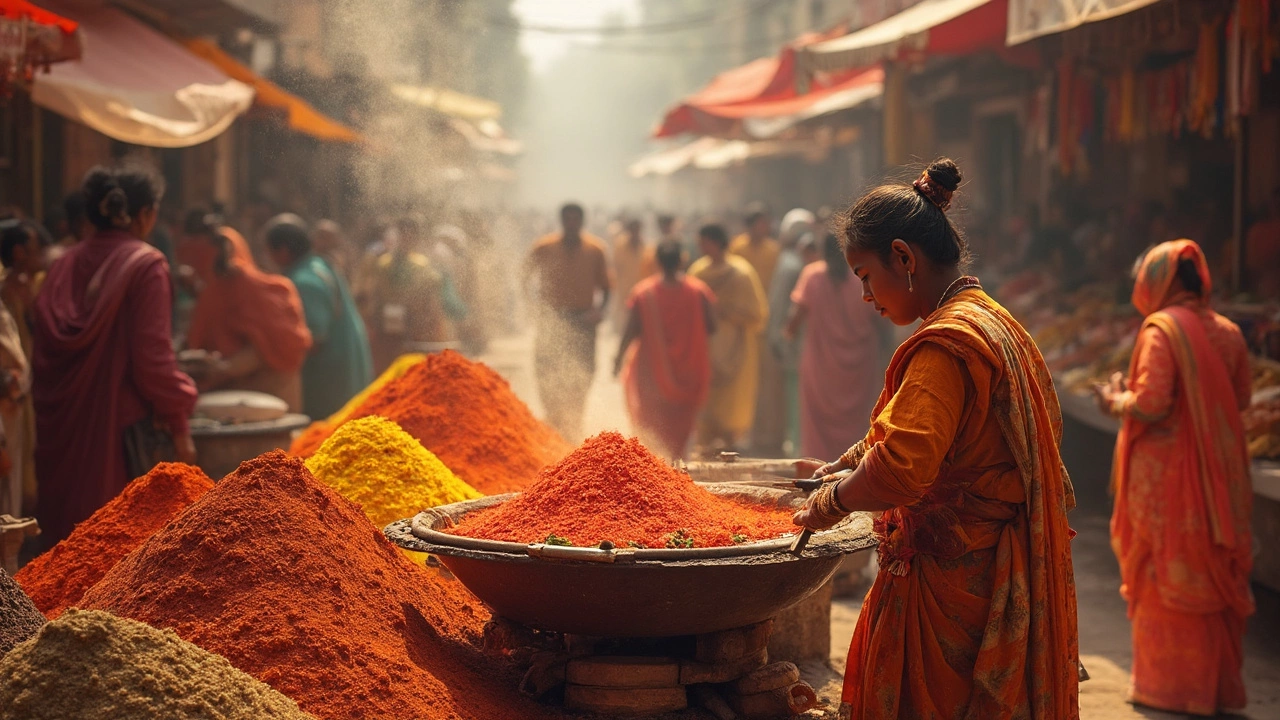Spicy Cuisine: Exploring Heat, Flavor, and Tradition
When you hear Spicy Cuisine, the art of using chilies, peppery spices, and bold aromatics in Indian cooking. Also known as Hot Indian Dishes, it brings heat and depth to meals while still letting other flavors shine.
One of the most popular side‑kick in this world is Chutney, a fresh or cooked blend of herbs, fruit, and hot peppers that adds a zingy punch. Another core element is Curry, a sauce‑based dish built around a mixture of spices, often featuring chili for heat. Both rely on a good Marinade, a liquid mix of acid, oil, and spices that tenderizes meat and infuses it with flavor. Even a humble Dosa, a fermented rice‑lentil crepe, can become a spicy canvas when flavored with chilies or served with fiery chutney. Together these entities create a network where heat, balance, and technique intersect.
Spicy cuisine encompasses several sub‑topics. It requires the right balance of chili and supporting spices so the heat doesn’t overwhelm the dish. It also demands proper timing – adding chilies too early can burn the flavor, while adding them at the end preserves brightness. Curry influences the overall heat level of spicy cuisine, and the type of chili used (green, dried, whole, or powdered) shapes the flavor profile. Marinade influences the tenderizing power of heat, making chicken or paneer stay juicy even when cooked in a fiery sauce.
Key Elements of Spicy Indian Cooking
First, choose the right chili. Green chilies give a fresh bite, while dried red chilies add depth and a smoky edge. The Scoville rating helps you gauge heat, but personal taste matters more. Second, learn how spices like cumin, coriander, and mustard seed complement chili. They add aroma and help round out the heat. Third, master the art of tempering – quickly frying whole spices in oil releases their oils, creating a flavor base that supports the chili’s punch.
When you build a chutney, start with a base of cilantro, mint, or coconut, then blend in chilies, lemon juice, and a pinch of salt. The acidity balances the heat, while the herbs keep the flavor bright. For a curry, heat oil, add tempering spices, then stir in onion, tomato, and finally chili powder or fresh chilies. Let the mixture simmer so the heat melds with the creamy or tomato base. A good Marinade mixes yogurt or lemon juice with chili paste, garlic, and ginger; it not only adds heat but also breaks down proteins for a tender bite.
Even everyday staples like dosa can join the spicy crew. Add finely chopped green chilies to the batter or serve the dosa with a side of hot tomato chutney. The crisp texture of the dosa contrasts nicely with the sharp heat of the chutney, creating a satisfying mouthfeel.
All of these techniques tie back to one goal: delivering heat that excites without burning. The balance between spice, acidity, and texture is what makes spicy cuisine so memorable. Below you’ll find a collection of articles that dive deeper into each of these areas – from quick fixes for flat dosa batter to the science behind why some dishes make you sleepy, and from the best oils for a crisp dosa to the ultimate guide on using sour cream in marinades. Each post adds a piece to the puzzle, helping you master the heat, flavor, and fun of spicy Indian cooking.
Which State Eats the Most Spicy Food in India?
India is a country known for its love of spices, and every state has its unique spicy dishes. While some regions embrace fiery flavors more than others, the quest to find the spiciest state offers delicious insights into local cuisine. From Andhra Pradesh to Rajasthan, discover the bold spices that heat up the plates across the nation. Learn about the most popular spicy street foods that locals just can’t resist.
Read more